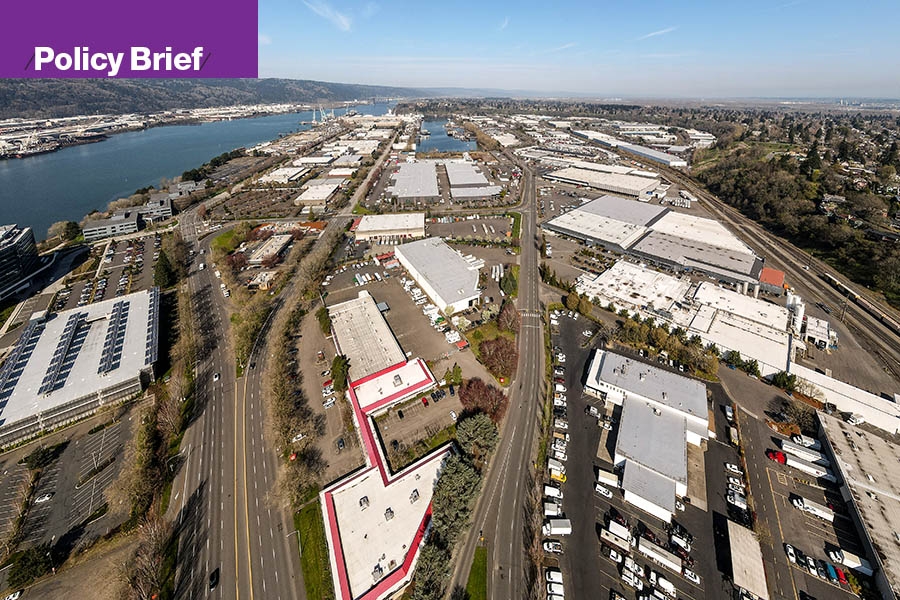Supply-chain expert Dina Ribbink on building more resilient systems.
Since the advent of COVID-19, we’re all too familiar with supply chains and their management, from the shortage and subsequent rationing of toilet paper in March 2020 to today’s empty shelves and long wait times on cars, lumber and more. How did the pandemic impact the production and distribution of goods to an extent that we are regularly facing shortages today? And what can we do to prevent this from happening in the future?
Part of the problem lies in the geographic spread of production facilities across the world. As price-conscious consumers look for the best deals, companies are faced with significant pressure to buy and produce at the lowest cost. Often this has meant relocating production to low-cost countries in Asia. Shaving off a few cents here and there adds up and can mean the competitive edge in today’s market — but it involves increasing transportation time, which makes reacting to changes in demand difficult. Also, it is key to be lean and efficient. Running a lean supply chain means that companies hold only as much inventory as is necessary to operate, while eliminating any redundancies. In theory, we are taught that too lean is inefficient and can collapse the system — but what is too lean?
So when COVID shut down China in January 2020, the average consumer here might have thought the virus and its consequences were far away, but soon the implications were reaching all the way to the USA. In February of last year, while the virus started spreading among the U.S. population, Chinese manufacturing plants closed or operated at reduced capacity and ports shut down. Many supply chains had some buffer by means of containers on ships on the ocean, but eventually they ran out. And now we are all suffering the consequences of previous efficiencies. COVID broke the system.
Right now we are observing container costs that are at least three to four times as high as they were a year ago — if companies even manage to reserve containers. This is in part due to labor shortages in the U.S. that translate to long waits at the ports. At times, ships spent months waiting to unload their cargo — a partial explanation for the exploding transportation cost. The consequence: Walk through any store or retailer and you may note empty shelves or at least missing products. Christmas toys are expected to be more expensive this year, if they even make it in time.
While the end consumer is feeling the pinch, the issue riddles the whole U.S. economy. For example, production at car manufacturers has slowed down significantly due to a semiconductor shortage. To address this particular issue, the U.S. Congress is currently considering a bill to supplement the funding of domestic semichip conductor manufacturing. However, government intervention is not the solution for a free market economy, nor is it financially feasible to reestablish manufacturing across various industries domestically.
When companies develop their supply chains and assess the risk of disruptions, they generally develop contingency plans that shift production from one part of the world to another part. However, a global pandemic is just that: global. Companies cannot avoid the repercussions of the pandemic by just relocating their production to alternative suppliers. Instead, they need to revisit their supply-chain model. Is the current “lean” system sustainable in the future? What alternatives do we have to create a resilient supply chain?
First, firms need to exploit both domestic production and production options in economic zones like those in the U.S.-Mexico-Canada Agreement. Domestic production is often expensive, currently exacerbated by the labor shortage. Setting up manufacturing in neighboring but less costly countries allows companies to realize at least some of the economic benefits of offshoring, while products can be shipped more quickly to the U.S. Given the significant increase in container shipping prices, more regional production may well be price competitive. Furthermore, the use of trucks and trains rather than container ships makes estimation of lead times more predictable. An additional benefit: the geographic proximity allows for shorter lead times and the ability to be more responsive to changes in customer demand.
Second, companies need to diversify their supplier portfolio or at least identify alternative suppliers ahead of time. The reliance on a single supplier often allows a company to generate economies of scale and is the most cost-efficient approach — as long as things go well. In times like today, though, having multiple suppliers in different geographic locations allows a company to spread the risk of a disruption. Unfortunately, establishing and cultivating relationships with various suppliers is more expensive and time consuming. Furthermore, developing and maintaining quality standards across different suppliers for the same product is difficult.
Overall, while both of these suggestions are solutions to the current dilemma companies face, the question remains whether consumers (and, by extension, firms) are willing to forgo price advantages to be able to build a more robust supply chain that can handle shocks to its system. Having a resilient supply chain can give us the competitive edge in the current market, but is it sustainable in the long run?
Dina Ribbink is an assistant professor of operations management and a researcher whose work focuses on contractual buyer-supplier relationships, at OSU-Cascades in Bend.







